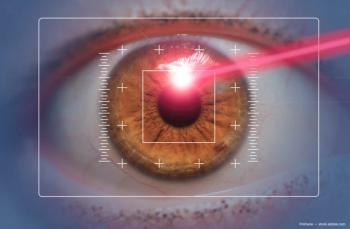
Follow the money
One thing that is interesting about the Medicare data is how much goes to the top 1% of physician billers.
By Peter J. McDonnell, MD
I didn’t decide to go to medical school in order to make a lot of money. Rather, my purpose in attending medical school was to help people. If it were money I was after, I would have done what normal people who lust after ungodly amounts of wealth do-become an official for Fédération Internationale de Football Association (FIFA).
So, it makes me slightly embarrassed to read articles with titles like “Some doctors reap outsize share of Medicare payments” and see that
Given that it is easier to find a cardiologist or radiation oncologist who is not wealthy than it is to find one of former Secretary of State Hillary Clinton’s e-mails, I can only presume my neighbors and acquaintances will see these news reports and suspect that I am (a) wealthy and (b) motivated to be an ophthalmologist by something other than altruism.
One thing that is interesting about the Medicare data is how much goes to the top 1% of physician billers. They garnered 17.5% of Medicare payments in 2013, after receiving 16.6% in 2012. So these “one percenters” sure seem busy, and one wonders whether they have achieved the ideal work-life balance.
As the data breakdown shows, most (51%) of the payments consist of reimbursements for medications. That would logically explain why oncologists top the list, as well as the lamentable truth that among ophthalmologists, these tax dollars flow disproportionately to retina specialists who inject costly anti-vascular endothelial growth factor agents into the vitreous cavities of patients with greater frequency than President Bill Clinton can give $500,000 speeches. Only 20% of the payments are for exams and evaluations, while the next largest chunk (14%) is for surgeries and procedures.
What went wrong?
My initial reaction-being as competitive in nature as any other former medical student-is to wonder where I went wrong, such that neither I nor my group of cornea/external disease colleagues are anywhere near the top of the list.
At first blush, this kind of thing does for one’s ego what Tom Brady’s locker room assistant does for his footballs. If people are going to suspect me of being motivated by greed, shouldn’t I at least be obscenely wealthy and spending my free time clubbing with other über-rich people like Jay-Z and Bill Gates?
But perhaps being a failure-stuck among the less productive 99% of my fellow physicians-is not all that bad.
“Some of the practices of the 1% have drawn scrutiny from regulators and prosecutors. The No. 3 biller among individual providers in 2013 was Salomon E. Melgen, a Florida eye doctor who had close ties to Sen. Robert Menendez (D-NJ) and was indicted on health-fraud charges in April.”
Although the article doesn’t mention it, so was the senator.
Reference
• Some doctors reap outsize share of Medicare payments. Wall Street Journal. June 2, 2015.
Newsletter
Don’t miss out—get Ophthalmology Times updates on the latest clinical advancements and expert interviews, straight to your inbox.















































.png)


